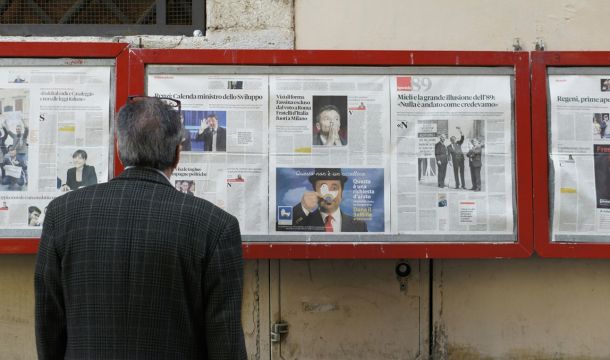A Critical Review of the “Reverse Racism Effect”
Joseph Dule, University of New Haven
A substantial body of research extending from the 1970s until present suggests that discrimination based on racial cues remains a principal cause of the disproportionate number of minorities killed by police. Recent shootings of Black Americans have inflamed the debate over whether police officers’ racial biases affect how likely they are to use lethal force against Black suspects. Such debates tend to assume that police officers’ implicit bias associating Black people as a probable threat will increase the chances of an officer discharging his/her weapon against them.
Current Research
James, James, and Vila (2016) take a new approach in measuring the effects that implicit racial bias can have against an officer’s decision to shoot a Black suspect. They argue that previous experimental research designs of “shoot” and “don’t shoot” scenarios lacked external validity—i.e. they bore little resemblance to actual shooting events. First, pressing a button is different from firing a weapon. Specifically, pressing a “don’t shoot” button requires the same action as pressing a “shoot” button. In an actual shooting event, no such “don’t shoot” button exists. Secondly, viewing still images of people holding objects (e.g., weapons or cell phones) bears little relationship to real-world police encounters with people, where dynamic movement and contextual cues such as suspect compliance are vital.
In contrast to the aforementioned button-pushing scenarios, James, James, and Vila’s (2016) experiment uses a novel approach that tests police officers’ deadly force judgement and decision making in state-of-the-art simulators. Accordingly, police departments internationally consider these simulators to be an accurate proxy for deadly force encounters and a preferred way to train police officers in the life or death decisions they may encounter in the field.
This study tested 80 police patrol officers from the Spokhane (Washington) Police Department, a medium-sized department in a city of approximately 250,000 people. Each participant responded to multiple scenarios with Black and White suspects, resulting in 1,517 observations. The study used a within-subject, repeated measures design to test police participant responses to highly realistic, custom-made, high definition video scenarios in simulators. The scenarios used in this experiment depicted domestic disturbances, vehicle stops, robberies in progress, and investigations of suspicious persons/circumstances—the most typical types of encounters that deteriorate to officer involved shootings.
In addition to testing participants in the simulators, the participants’ implicit bias was measured using the well-validated “race/weapons” version of Harvard’s Implicit Association Test (IAT). This was completed in order to determine whether implicit racial bias predicts an officer’s decision to shoot. The results of the IAT score indicated that most officers showed moderate (40%) or strong (38%) levels of implicit bias.
To assess whether police officers tend to be biased against Black Americans in deadly encounters, this study analyzed data from experiments conducted in a laboratory setting between August 2012 and November 2013. It is worth stressing that these experiments were conducted prior to the events of Ferguson, Missouri, which brought national attention to the topic of police use of deadly force against Black people. In total, 80 experienced police patrol officers were tested at the Simulated Hazardous Operational Tasks (SHOT) laboratory, which is part of Washington State University (WSU)’s Sleep and Performance Research Center. Of the 80 participants, 71 were male and 76 were White (with 1 Black, 1 Asian, and 2 Hispanic participants—all male).
Experiments involved repeated 5.5-hour sessions in highly realistic, dynamic simulations of critical daily operational tasks, one of which was deadly force judgement and decision-making. Officers involved in the experiment came into the SHOT lab on four separate occasions. On each of these experimental days, officers responded to six scenarios. The first two experimental days had a combined total of 12 scenarios—3 deadly scenarios featuring White suspects, 3 deadly scenarios featuring Black suspects, 3 null scenarios featuring White suspects, and 3 null scenarios featuring Black suspects. “Null” scenarios appear threatening initially, but turn out not to require the use of deadly force. The third and fourth experimental days also had a combined 12 scenarios, but the racial and deadly split was not identical—four deadly scenarios featuring White suspects, 2 deadly scenarios featuring Black suspects, 4 null scenarios featuring White suspects, and 2 null scenarios featuring Black suspects. Importantly, at no point during the experiments was suspect race mentioned to any of the participants.
The results of the experiment call into question the widespread assumption that implicit racial bias is the cause of the disproportionate number of racial minorities in officer-involved shootings. Despite the police officers’ strong implicit bias associating Black suspects with weapons, the participants took longer to shoot armed Black suspects than White armed suspects (an average of 200 milliseconds longer) and were three times less likely to shoot unarmed Black suspects than unarmed White suspects. Simply put, they were more cautious and tentative in their decision to shoot Black people. These findings suggest that implicit racial bias does not result in racially motivated decisions to shoot in an expected way. Rather, these police participants displayed a counter bias or “reverse racism” effect when tested in the deadly force judgement and decision-making simulator.
James, James, and Vila (2016) posit a few possibilities as to why the reverse racism effect exists in this experiment. First, the effect was artificially engineered through test stimuli. In other words, were Black suspects intentionally put in situations where they appeared less harmful? Although possible, this was ruled out as a likely contributing factor, as suspect demeanor was carefully controlled. Second, the effect was due to an “observer effect,” which posits that participants acted in a particular way to appear unbiased to the observers. Anecdotal evidence from police participants suggest they had no idea that racial bias was being observed. Further, experiments were randomized so the participants did not get a scenario featuring a White suspect followed by an equivalent scenario featuring a Black suspect. Third, concerns about the social and legal consequences of shooting a member of a historically oppressed group. This was identified to be the most likely factor contributing to the “reverse racism” effect, coupled with the hypothetical possibility of severe media backlash that would likely follow a fatal officer shooting against a minority suspect.
Three limitations were identified in this study. First, it is not possible to recreate a deadly encounter event in a laboratory setting. Nevertheless, the simulators used in this experiment are widely regarded, in the U.S. and internationally, to be accurate proxies for deadly force encounters. The researchers do suggest there is, however, a need for more interactive scenarios, whereby police officers could be analyzed from the initial contact of the suspect on screen, all the way to the decision to shoot or not shoot. In effect, there is more to be gleaned from the entirety of the interaction, as opposed to just focusing on the split second “shoot” or “don’t shoot” moment. Second, due to suspect participant limitations, the third and fourth experimental days did not involve an equivalent number of Black and White suspects. The research team considered this factor as noteworthy, but not likely a critical flaw. Finally, 76 of the 80 participants were White. Further research incorporating greater racial and ethnic diversity is therefore needed to ascertain if police officer race influences deadly force encounter outcomes.
Policy Discussion
Terrill (2016) points out some additional issues with this research study. Of critical importance is the issue of whether or not the officers suspected that race was being observed in the study. This simply cannot be ignored. Officer “suspicion” has been well documented over the past century, and it seems unrealistic to assume that each police officer had no idea that race was being observed, or was even central to the study itself. Further, not all police shootings occur from “split-second” decisions. There is often a series of events that occurs prior to and during an encounter. It is also worth emphasizing the fact that there are no significant consequences in the laboratory when being “under-vigilant” with Blacks (Fridell, 2016). In a real world setting, the stakes are much higher and could lead to an officer being killed.
Despite the limitations of the James, James, and Vila (2016) experiment, such research unquestionably represents a step in the right direction. Understanding how implicit racial bias can manifest in police decisions to use deadly force remains a salient concern. The current widespread social unrest experienced in response to alleged “racially motivated police shootings” shows no signs of abating. It is imperative, however, that we do not jump to any conclusions from this study. According to Terrill (2016), doing so would be very unwise. After all, this is a single study from a single agency in Spokane, WA. Findings could be completely different from larger urban cities, or smaller rural areas.
Additional research should therefore be commissioned in order to explore what factors may produce not only under-vigilance with racial/ethnic minority suspects, but also over-vigilance, or appropriate-vigilance outcomes. It is likely that individual officer characteristics, agency characteristics (i.e. quality and frequency of training), and the climate of the country or jurisdiction that it occurs each play a crucial role in determining when an officer decides to apply deadly force (Fridell, 2016).
References
Fridell, L. (2016). Racial Aspects of Police Shootings: Reducing Both Bias and Counter Bias. Criminology & Public Policy, Vol. 15, Issue 2.
James, L., James, S. M., & Vila, B. J. (2016). The reverse racism effect: Are cops more hesitant to shoot Black than White suspects. Criminology & Public Policy, Vol. 15, Issue 2.
Terrill, W. (2016). Deadly Force: To Shoot or Not to Shoot. Criminology & Public Policy, Vol. 15, Issue 2.
Recent Articles

Evidence-Based Professionals' Monthly - June 2025

Evidence-Based Professionals' Monthly - May 2025

Turning Point Community Programs (TPCP) Completes Comprehensive Training on Evidence-Based Case Management, Sets Foundation for Future Staff Development

Alameda County Probation Renews Evidence-Based Organization Certification

Evidence-Based Professionals' Monthly - April 2025

Evidence-Based Professionals' Monthly - March 2025

Evidence-Based Professionals' Monthly - February 2025

Evidence-Based Professionals' Monthly - January 2025
